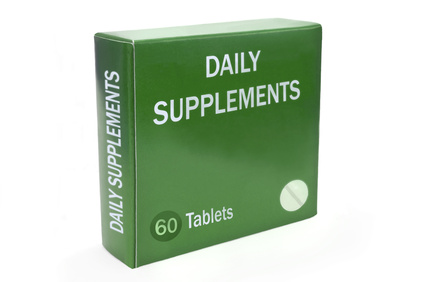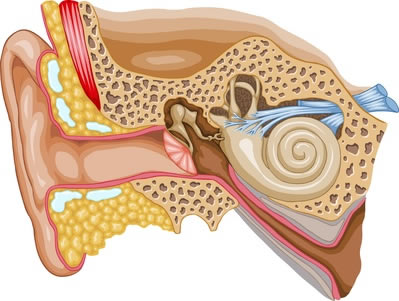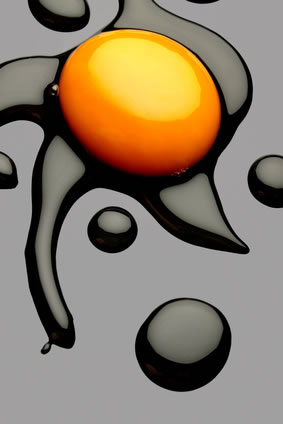Phosphatidylserine (PS) is an essential lipid component of the cerebral cellular membranes. Is naturally found in every cell membrane in the body, however in very high levels in cell membranes in the brain. PS is the key nutrient that regulates how brain cells work. It regulates which nutrients enter brain cells, how waste gets out of brain cells, and communication between brain cells. Phosphatidylserine is a phospholipid that is found in all cells, but is most highly concentrated in the walls of brain cells, making up about 70% of its nerve tissue mass.
Phosphatidylserine plays a important role in neurotransmission and synaptic function. Along with another essential fatty acids, may also play a critical role in cognitive function, including maintaining concentration and memory. Over 3,000 published research papers and more than 60 clinical trials have established that PS can rejuvenate your brain cell membranes and thereby. PS has been used widely in Europe to help declining mental function and depression in the elderly.
Phosphatidylserine Benefits
Significant findings from numerous double-blind studies suggests that animal-source PS is an influential treatment for Alzheimer’s disease and other forms of age-related mental decline. Phosphatidylserine specifically influences cellular metabolism and communication by enhancing the fluidity of cell membranes. This function is essential to your brain cells’ capacity to send and receive biochemical communication. It increases the communication between brain cells and also restores the brain’s supply of acetylcholine, a primary neurotransmitter that is significant to memory and cognitive function. Impaired short term memory and mental function, in severe cases depression, may result from PS deficiency.
PS stimulates the release of dopamine, increases the production of acetylcholine, enhances brain glucose metabolism, reduces cortisol levels, and boosts the activity of nerve growth factor (NGF), which oversees the health of cholinergic neurons. Human clinical studies show phosphatidyl serine may assist against the symptoms of dementia and Age-Associated Memory Impairment, including reducing the risk of dementia and cognitive dysfunction.
According to a study described University of New Mexico and Mark McDaniel, there is a possibility that depression, (especially age-related depression), may be linked to falling phosphatidylserine levels. Scientists at the University of Milan conducted a study of the effects of PS on mood, stress, cortisol, and memory. They studied 10 women, aged 70-81 years old, who were suffering with depression. They found that phosphatidylserine increased brain turnover of dopamine, norepinephrine, acetylcholine and glucose reserves. This means that phosphatidylserine was effective in reducing anxiety, while also lessening their symptoms of depression, and improving long-term memory and learning.
 In a 1991 study of phosphatidyl serine among people aged 50 to 75, researchers found positive effects when they used 100 mg doses of PS, three times daily. Researchers found a 30 % improvement in cognitive function that included memory, learning, recalling names, faces, and numbers. In one double-blind study that enrolled 149 people with memory loss but not dementia, PS provided important effects as compared with placebo. People with the most severe memory loss showed the most development. In a large, multicenter study of geriatric patients, from 23 geriatric or general medicine units with moderate to severe age-related cognitive decline, those who received phosphatidyl serine therapy showed significantly improved behavior, such as increased motivation, initiative and socialization, compared to the placebo group. In another 6 month study of 40 individuals, PS supplementation enhanced cerebral metabolism and outcomes of cognitive training.
In a 1991 study of phosphatidyl serine among people aged 50 to 75, researchers found positive effects when they used 100 mg doses of PS, three times daily. Researchers found a 30 % improvement in cognitive function that included memory, learning, recalling names, faces, and numbers. In one double-blind study that enrolled 149 people with memory loss but not dementia, PS provided important effects as compared with placebo. People with the most severe memory loss showed the most development. In a large, multicenter study of geriatric patients, from 23 geriatric or general medicine units with moderate to severe age-related cognitive decline, those who received phosphatidyl serine therapy showed significantly improved behavior, such as increased motivation, initiative and socialization, compared to the placebo group. In another 6 month study of 40 individuals, PS supplementation enhanced cerebral metabolism and outcomes of cognitive training.
Placebo-controlled and double-blind studies have shown mild effects from phosphatidylserine supplementation when used in the amount of 300 mg per day for 3 to 12 weeks in patients with early Alzheimer’s disease. In a study reported in 1992 in the journal, Psychopharmacological Bulletin, PS was found to develop several measures of cognitive function in people with early stage Alzheimer’s disease.
Best Food Sources Phosphatidylserine
It’s manufactured by the body but can also be obtained through dietary sources such as meat, fish, white beans, barley and soy lecithin. Notably mackerel and cod, contain significant level of phosphatidylserine. 100 g serving of cow brains contains 713 mg of phosphatidylserine. But, phosphatidylserine derived from the brains of infected cows could transmit the disease to humans.
PS Supplements
Phosphatidylserine is a semi-synthetic product manufactured from soy lecithin. Originally, PS supplements were derived from the brain cells of cows. But, because of concerns about mad cow disease, many firms now produce phosphatidylserine supplements from soy derivatives. Early studies, were based on cow-derived supplements. According to a survey conducted in 2001; using soy as a source of phosphatidylserine does not show the same positive outcome for treatment as the bovine source.
Phosphatidylserine Dosage
For the purpose of improving mental function, phosphatidylserine is usually taken in doses of 100 mg two to three times daily. Most of the trials were conducted at 300 mg per day but for people with motor impairment, more doses may be necessary.
Side Effects
PS is generally regarded as safe when used at recommended dosages. Phosphatidylserine has infrequently caused gastro-intestinal upset and can cause insomnia if taken in 600 mg dose before going to bed. Phosphatidylserine interacts with blood-thinning medications. Can compound the effect of blood thinners, such as warfarin, heparin, aspirin, pentoxifylline, ticlopidine and clopidogrel.
 Observational studies in have shown that the risk for some types of cancer is lower in people who have higher levels of lycopene in their blood. Evidence is strongest for lycopene protective effect against cancer of the lung, prostate, and stomach. Serum and tissue lycopene levels have been inversely related to the risk of prostate and lung cancers. It may also help to protect against cancer of the breast, cervix, pancreas, esophagus, and colon and rectum. Lycopene has also been demonstrated to have other possible anti cancer activities particularly relating to modulation of intercellular communication and alterations in intracellular signalling pathways. Developing clinical research shows that taking 8 mg/day or 4 mg/day of a special lycopene supplement significantly improves oral leukoplakia. An Italian study showed that people who ate at least one tomato-based product per day had a 50 percent lower chance of contracting digestive tract cancer than those who did not eat tomatoes.
Observational studies in have shown that the risk for some types of cancer is lower in people who have higher levels of lycopene in their blood. Evidence is strongest for lycopene protective effect against cancer of the lung, prostate, and stomach. Serum and tissue lycopene levels have been inversely related to the risk of prostate and lung cancers. It may also help to protect against cancer of the breast, cervix, pancreas, esophagus, and colon and rectum. Lycopene has also been demonstrated to have other possible anti cancer activities particularly relating to modulation of intercellular communication and alterations in intracellular signalling pathways. Developing clinical research shows that taking 8 mg/day or 4 mg/day of a special lycopene supplement significantly improves oral leukoplakia. An Italian study showed that people who ate at least one tomato-based product per day had a 50 percent lower chance of contracting digestive tract cancer than those who did not eat tomatoes. Pycnogenol helps to protect capillaries by binding to blood vessels walls and reducing permeability. Pine Bark Extract contains substances that might improve blood flow. Has been shown to improve endothelial function and blood flow. Pycnogenol, inhibits superoxide radical in blood flow, and protects blood vessel walls. The most positive improvements are in peripheral microcirculation. Corrects platelet activity which is responsible for the development of blood clots following vascular damage. Pycnogenol gives a protection against the cardiovascular risks by preventing the clotting of blood platelets, caused by smoking, and inhibits the nicotine-induced constriction of blood vessels. In a study, blood was drawn before and 2 hours after administration of a single pycnogenol dose. The results clearly showed a dose-dependent reduction of platelet activity. Already the lowest dose of 25 mg pycnogenol noticeably lowered the blood platelet activity. Next research revealed that pycnogenol inhibits release of thromboxane from platelets of cigarette smokers to levels of healthy non-smokers.
Pycnogenol helps to protect capillaries by binding to blood vessels walls and reducing permeability. Pine Bark Extract contains substances that might improve blood flow. Has been shown to improve endothelial function and blood flow. Pycnogenol, inhibits superoxide radical in blood flow, and protects blood vessel walls. The most positive improvements are in peripheral microcirculation. Corrects platelet activity which is responsible for the development of blood clots following vascular damage. Pycnogenol gives a protection against the cardiovascular risks by preventing the clotting of blood platelets, caused by smoking, and inhibits the nicotine-induced constriction of blood vessels. In a study, blood was drawn before and 2 hours after administration of a single pycnogenol dose. The results clearly showed a dose-dependent reduction of platelet activity. Already the lowest dose of 25 mg pycnogenol noticeably lowered the blood platelet activity. Next research revealed that pycnogenol inhibits release of thromboxane from platelets of cigarette smokers to levels of healthy non-smokers. The word ‘tinnitus’ means tinkling or ringing like a bell. Episodes of tinnitus may be brief or it can be a permanent problem. In many people with tinnitus, the cause is not known. Some medications and other diseases of the inner ear can cause tinnitus. Tinnitus can in rare situations be a symptom of such important problems as a brain aneurysm or a brain tumor.
The word ‘tinnitus’ means tinkling or ringing like a bell. Episodes of tinnitus may be brief or it can be a permanent problem. In many people with tinnitus, the cause is not known. Some medications and other diseases of the inner ear can cause tinnitus. Tinnitus can in rare situations be a symptom of such important problems as a brain aneurysm or a brain tumor. According to a 1995 study, increasing the consumption of dark green, leafy vegetables appears to offer some protection against macular degeneration. In a study of 380 people aged 66-75 years in the UK, people with lower blood levels of lutein plus zeaxanthin were more likely to have age-related macular degeneration.
According to a 1995 study, increasing the consumption of dark green, leafy vegetables appears to offer some protection against macular degeneration. In a study of 380 people aged 66-75 years in the UK, people with lower blood levels of lutein plus zeaxanthin were more likely to have age-related macular degeneration.